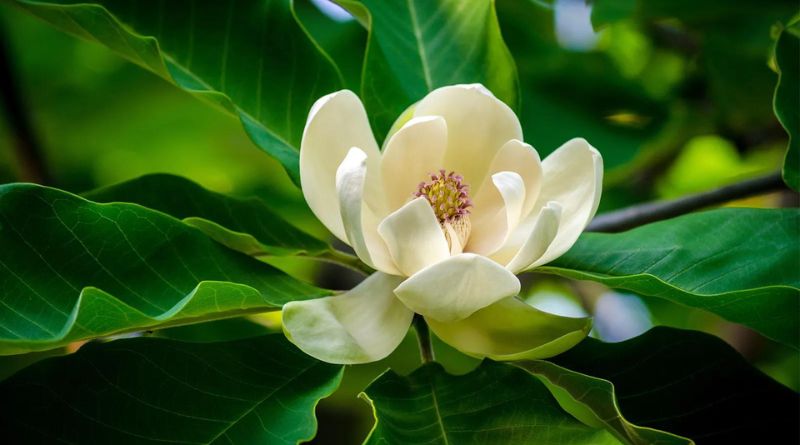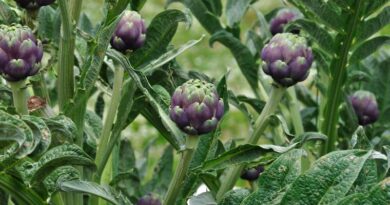Magnolia trees and shrubs are beloved for their beautiful flowers, elegant form, and lush foliage. With a wide variety of species and cultivars available, there’s a magnolia to suit every garden style and climate. In this article, we’ll explore eight popular types of magnolia trees and shrubs, highlighting their unique characteristics and growing requirements.
Southern Magnolia (Magnolia grandiflora)
Southern Magnolia, also known as Magnolia grandiflora, is one of the most iconic magnolia species. It features large, glossy leaves and fragrant white flowers that can reach up to 12 inches in diameter. Southern Magnolia trees are prized for their year-round beauty and are often used as specimen trees in landscapes.
Saucer Magnolia (Magnolia × soulangeana)
Saucer Magnolia, a hybrid of Magnolia denudata and Magnolia liliiflora, is renowned for its early spring blooms. Its large, cup-shaped flowers range in color from white to pink and purple, adding a burst of color to the landscape. Saucer Magnolia trees are relatively small and compact, making them ideal for small gardens or urban landscapes.
Star Magnolia (Magnolia stellata)
Star Magnolia is a deciduous shrub or small tree prized for its star-shaped white flowers that appear in early spring. Unlike other magnolia species, Star Magnolia flowers have a delicate fragrance and are less prone to frost damage. This compact and slow-growing magnolia variety is perfect for smaller gardens or as a focal point in mixed borders.
Japanese Magnolia (Magnolia liliiflora)
Japanese Magnolia, also known as Mulan magnolia or Tulip Tree, is a deciduous shrub or small tree native to Japan. It produces large, showy flowers in shades of pink, purple, or white, resembling tulips. Japanese Magnolia trees are prized for their early spring blooms and attractive foliage, making them popular ornamental plants in gardens and parks.
Cucumber Tree (Magnolia acuminata)
Cucumber Tree, named for its cucumber-shaped fruit, is a deciduous tree native to eastern North America. It produces small, yellowish-green flowers in late spring, followed by green fruit that ripens to red in the fall. Cucumber Tree is valued for its unique appearance and adaptability to a wide range of growing conditions.
Sweetbay Magnolia (Magnolia virginiana)
Sweetbay Magnolia is a graceful, evergreen tree or large shrub native to the southeastern United States. It features fragrant creamy-white flowers that bloom from late spring to early summer, attracting bees and butterflies. Sweetbay Magnolia trees are prized for their glossy green foliage and tolerance of moist, acidic soils.
Bigleaf Magnolia (Magnolia macrophylla)
Bigleaf Magnolia is a deciduous tree native to the southeastern United States. It is known for its enormous leaves, which can reach up to 3 feet in length, and large, fragrant white flowers that bloom in late spring or early summer. Bigleaf Magnolia trees are prized for their tropical appearance and striking presence in the landscape.
Evergreen Magnolia (Magnolia grandiflora) Varieties
In addition to the classic Southern Magnolia, there are several cultivated varieties of Evergreen Magnolia that offer unique characteristics. Varieties such as ‘Little Gem,’ ‘Bracken’s Brown Beauty,’ and ‘Kay Parris’ feature compact growth habits, smaller leaves, and abundant flowers, making them suitable for smaller gardens or container planting.
Deciduous Magnolia Varieties
Alongside the evergreen magnolias, there are numerous deciduous magnolia varieties that offer stunning blooms and foliage. Varieties such as ‘Jane,’ ‘Ann,’ and ‘Betty’ are known for their vibrant pink or purple flowers, while ‘Leonard Messel’ and ‘Merrill’ boast pure white blooms. These deciduous magnolias add seasonal interest to the landscape with their showy flowers and colorful foliage.
Best Growing Conditions for Magnolia Trees
Magnolia trees thrive in moist, well-drained soil and prefer a location with full sun to partial shade. They are relatively low-maintenance once established but may benefit from regular watering during dry periods and annual fertilization in the spring. Mulching around the base of the tree can help retain moisture and suppress weeds.
Common Pests and Diseases
Magnolia trees are generally resistant to pests and diseases, but they may occasionally encounter issues such as scale insects, aphids, and powdery mildew. Regular inspection and proper care can help prevent these problems, and prompt treatment with insecticidal soap or horticultural oil can effectively control pests and diseases if necessary.
Pruning and Maintenance
Pruning magnolia trees is generally not necessary unless they become overgrown or develop dead or damaged branches. When pruning is required, it’s best to do so in late winter or early spring before new growth begins. Remove any dead or diseased branches, and prune for shape as needed, taking care not to remove more than one-third of the tree’s canopy at a time.
Conclusion
Magnolia trees and shrubs are prized for their beauty, versatility, and ease of care. Whether you prefer the classic elegance of Southern Magnolia or the vibrant blooms of Saucer Magnolia, there’s a magnolia variety to suit every garden style and climate. By selecting the right species and providing optimal growing conditions, you can enjoy the beauty of magnolia trees in your landscape for years to come.







